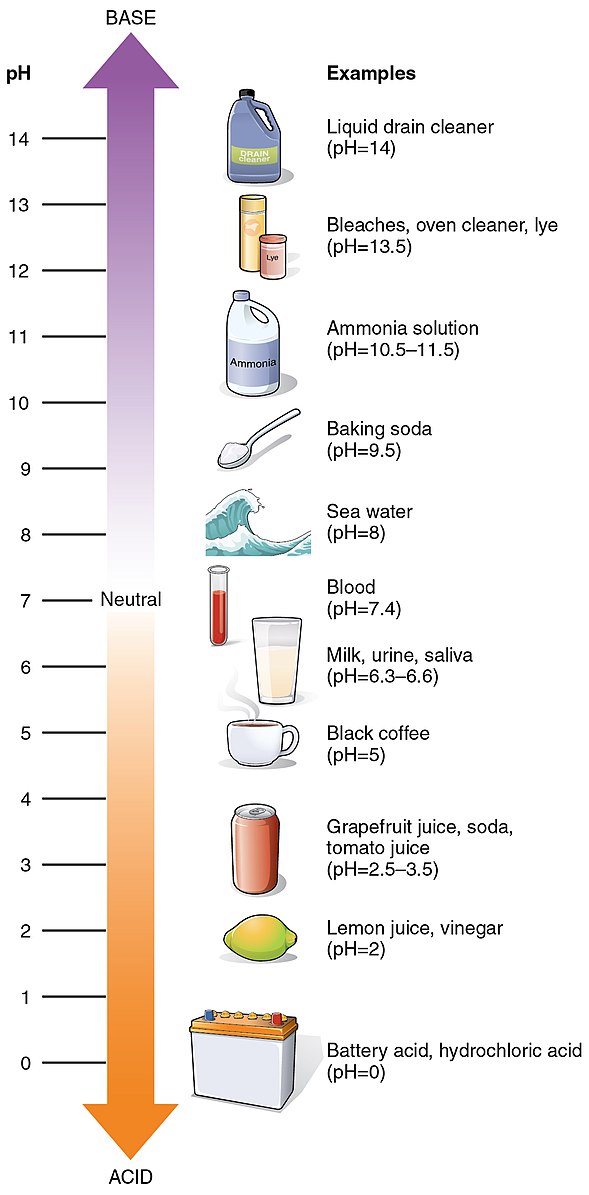Sodium chloride (NaCl), commonly known as table salt, is a neutral compound with a pH value of approximately 7. This is due to the extremely weak basicity of the Cl- ion, which is the conjugate base of the strong acid HCl. When sodium chloride is dissolved in water, it dissociates into sodium ions (Na+) and chloride ions (Cl-), and the pH of the solution remains neutral.
Understanding the pH of Sodium Chloride in Water
The pH of a solution is a measure of the concentration of hydrogen ions (H+) in the solution. A pH value of 7 is considered neutral, with values below 7 being acidic and values above 7 being basic.
In the case of sodium chloride (NaCl) in water, the pH is approximately 7 for the following reasons:
-
Sodium Chloride is a Neutral Compound: Sodium chloride is a neutral compound, meaning it does not have any significant acidic or basic properties. This is because the sodium ion (Na+) is a very weak base, and the chloride ion (Cl-) is the conjugate base of the strong acid hydrochloric acid (HCl).
-
Dissociation in Water: When sodium chloride is dissolved in water, it dissociates into its constituent ions: sodium ions (Na+) and chloride ions (Cl-). These ions do not react with the water molecules to any significant extent, and therefore, the pH of the solution remains neutral.
-
Absence of Contaminants: High-purity sodium chloride, such as that used in laboratory or industrial applications, is typically very close to pH 7. However, if the sodium chloride contains even small amounts of acidic or basic substances, these can react with the water and change the pH of the solution.
Measuring the pH of Sodium Chloride in Water
 Image source: OpenStax College
Image source: OpenStax College
To test the pH of a sodium chloride solution, you can use a pH meter or pH indicator strips. These tools will provide a precise measurement of the pH value, which should be close to 7 for a pure sodium chloride solution.
If the pH is significantly different from 7, it may indicate the presence of contaminants or impurities in the sodium chloride. In such cases, it may be necessary to purify the sodium chloride or use a different source.
Adjusting the pH of Sodium Chloride in Water
If you need to adjust the pH of a sodium chloride solution, you can use acid or base to lower or raise the pH, respectively. However, it is important to note that adding acid or base to a sodium chloride solution can also affect the concentration of the ions present, which may have unintended consequences.
For example, adding a strong acid, such as hydrochloric acid (HCl), to a sodium chloride solution would increase the concentration of hydrogen ions (H+) and lower the pH. Conversely, adding a strong base, such as sodium hydroxide (NaOH), would increase the concentration of hydroxide ions (OH-) and raise the pH.
It is generally best to use high-purity sodium chloride and avoid adding any additional substances unless absolutely necessary. If you do need to adjust the pH, it is recommended to do so with caution and carefully monitor the effects on the solution.
Conclusion
In summary, the pH of sodium chloride in water is approximately 7, indicating that it is a neutral compound. Contaminants or impurities can affect the pH value, but high-purity sodium chloride is typically very close to pH 7. To test or adjust the pH of a sodium chloride solution, you can use pH meters or indicators, but it is important to exercise caution when adding any additional substances.
